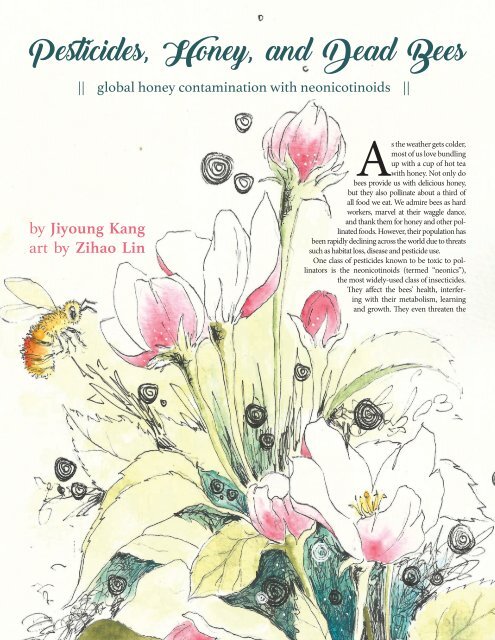YSM Issue 90.5
Create successful ePaper yourself
Turn your PDF publications into a flip-book with our unique Google optimized e-Paper software.
Pesticides, Honey, and Dead Bees<br />
|| global honey contamination with neonicotinoids ||<br />
by Jiyoung Kang<br />
art by Zihao Lin<br />
As the weather gets colder,<br />
most of us love bundling<br />
up with a cup of hot tea<br />
with honey. Not only do<br />
bees provide us with delicious honey,<br />
but they also pollinate about a third of<br />
all food we eat. We admire bees as hard<br />
workers, marvel at their waggle dance,<br />
and thank them for honey and other pollinated<br />
foods. However, their population has<br />
been rapidly declining across the world due to threats<br />
such as habitat loss, disease and pesticide use.<br />
One class of pesticides known to be toxic to pollinators<br />
is the neonicotinoids (termed “neonics”),<br />
the most widely-used class of insecticides.<br />
They affect the bees’ health, interfering<br />
with their metabolism, learning<br />
and growth. They even threaten the


















